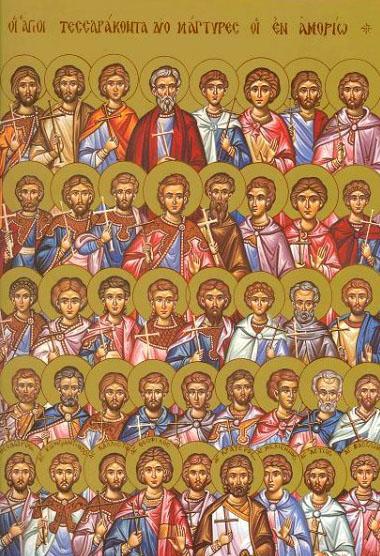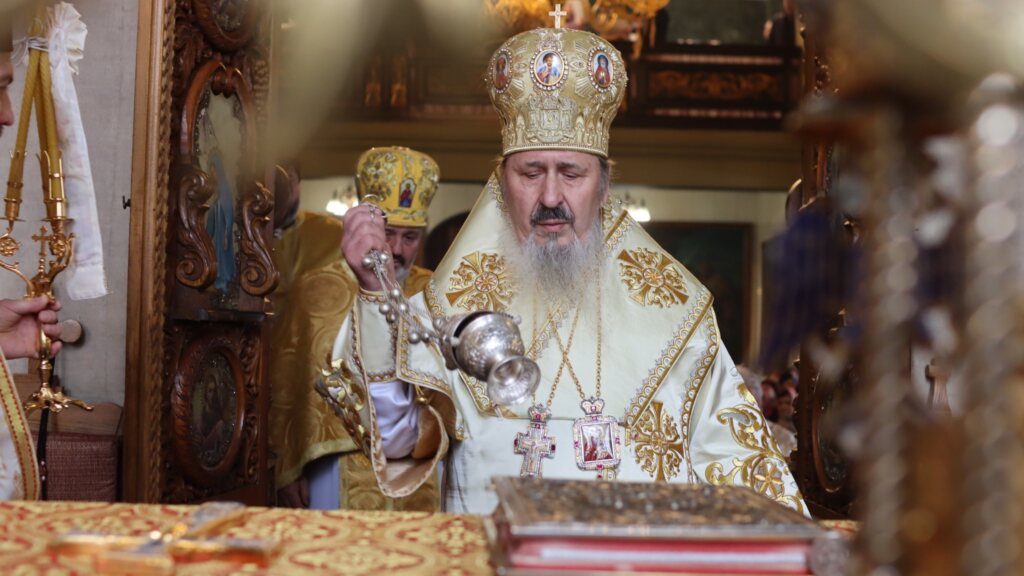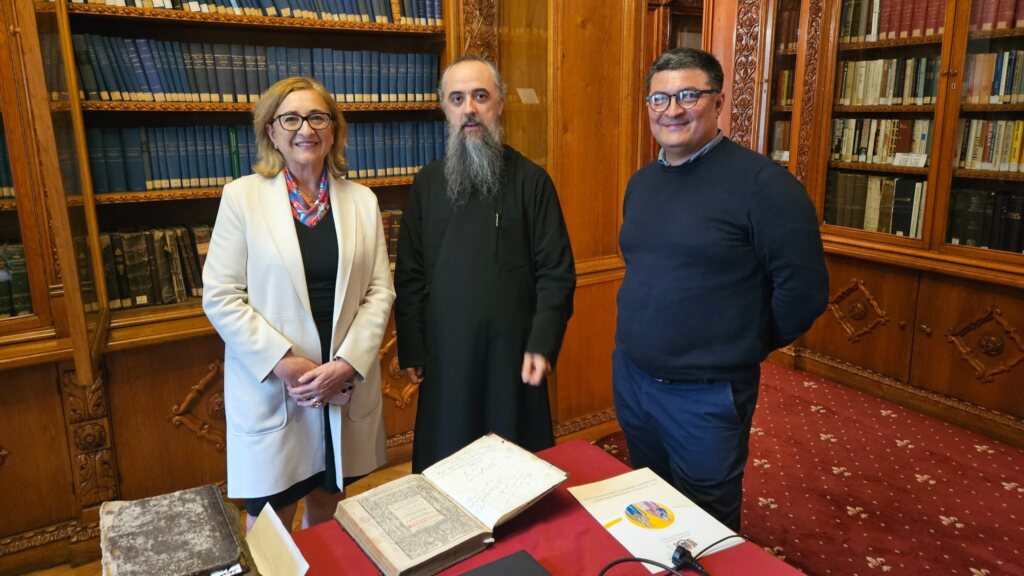Orthodox Calendar, March 6
42 Martyrs of Ammoria
The Holy 42 Martyrs of Ammoria: Constantine, Aetius (Aetitus), Theophilus, Theodore, Melissenus, Callistus, Basoes and the others with them. During a war between the Byzantine Emperor Theophilus (829-842) and the Saracens, the Saracens managed to besiege the city of Ammoria (in Galicia in Asia Minor). As a result of treason on the part of the military commander Baditses, Ammoria fell, and forty-two of its generals were taken captive and sent off to Syria.
During the seven years of their imprisonment they tried in vain to persuade the captives to renounce Christianity and accept Islam. The captives stubbornly resisted all their seductive offers and bravely held out against terrible threats. After many torments that failed to break the spirit of the Christian soldiers, they condemned them to death, hoping to shake the determination of the saints before executing them. The martyrs remained steadfast, saying that the Old Testament Prophets bore witness to Christ, while Mohammed called himself a prophet without any other witnesses to support his claim.
They said to the soldier Theodore, “We know that you forsook the priestly office, became a soldier and shed blood in battle. You can have no hope in Christ, Whom you abandoned voluntarily, so accept Mohammed.” But the martyr replied, “You do not speak truthfully when you say that I abandoned Christ. Moreover, I left the priesthood because of my own unworthiness. Therefore, I must shed my blood for the sake of Christ, so that He might forgive the sins that I have committed against Him.”
The executioners took each one separately and led him off to be beheaded, then threw the bodies into the River Euphrates. In the service to them, these holy passion-bearers are glorified as: the “All-Blessed” Theodore, the “Unconquered” Callistus, the “Valliant” Constantine, the “Wondrous” Theophilus and “the Most Strong” Basoes.
The betrayer Baditses did not escape his shameful fate. The enemy knew that it is impossible to trust a traitor, and so they killed him.
Troparion, tone 4:
Your forty-two holy martyrs, O Lord, through their sufferings have received incorruptible crowns from You, our God. For having Your strength, they laid low their adversaries, and shattered the powerless boldness of demons. Through their intercessions, save our souls!
Uncovering of the Precious Cross
The Holy Empress Helen uncovered the Precious Cross and Nails of the Lord at Jerusalem in 326.
At the beginning of the reign of Saint Constantine the Great (306-337), the first Roman emperor to recognize Christianity, he and his pious mother Saint Helen decided to rebuild the city of Jerusalem. They also planned to build a church on the site of the Lord’s suffering and Resurrection, in order to reconsecrate and purify the places connected with the Savior’s death and Resurrection from the foul taint of paganism.
The empress Helen journeyed to Jerusalem with a large quantity of gold. Saint Constantine wrote a letter to Patriarch Macarius I (313-323), requesting him to assist her in every possible way with her task of the restoring the Christian holy places.
After her arrival in Jerusalem, the holy empress Helen began to destroy all the pagan temples and reconsecrate the places which had been defiled by the pagans.
In her quest for the Life-Creating Cross, she questioned several Christians and Jews, but for a long time her search remained unsuccessful. Finally, an elderly Hebrew named Jude told her that the Cross was buried beneath the temple of Venus. Saint Helen ordered that the pagan temple be demolished, and for the site to be excavated. Soon they found Golgotha and the Lord’s Sepulchre. Not far from the spot were three crosses, a board with the inscription written by Pilate (John 19:19), and four nails which had pierced the Lord’s Body.
Now the task was to determine on which of the three crosses the Savior had been crucified. Patriarch Macarius saw a dead person being carried to his grave, then he ordered that the dead man be placed upon each cross in turn. When the corpse was placed on the Cross of Christ, he was immediately restored to life. After seeing the raising of the dead man, everyone was convinced that the Life-Creating Cross had been found. With great joy the empress Helen and Patriarch Macarius lifted the Life-Creating Cross and displayed it to all the people standing about.






